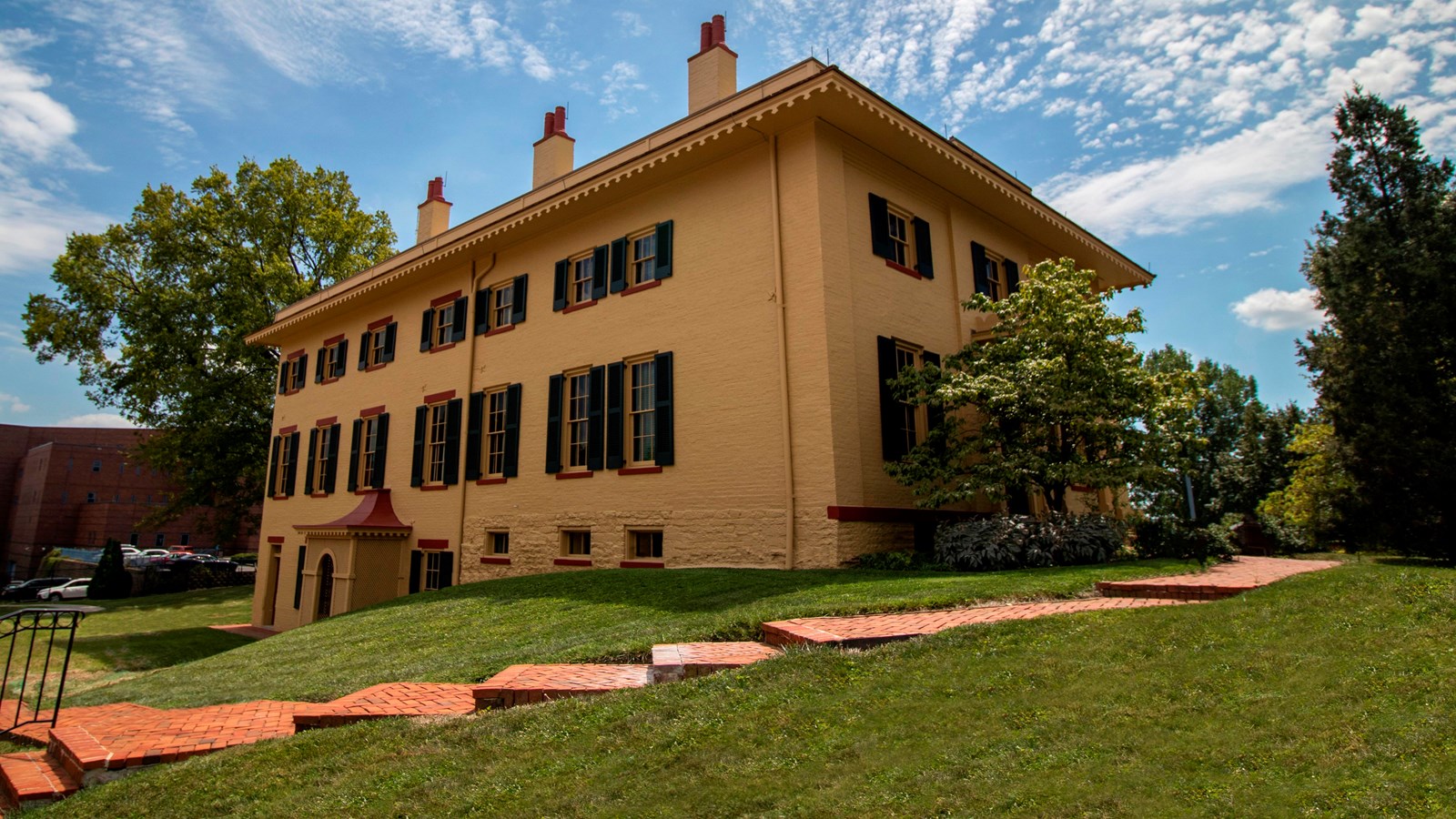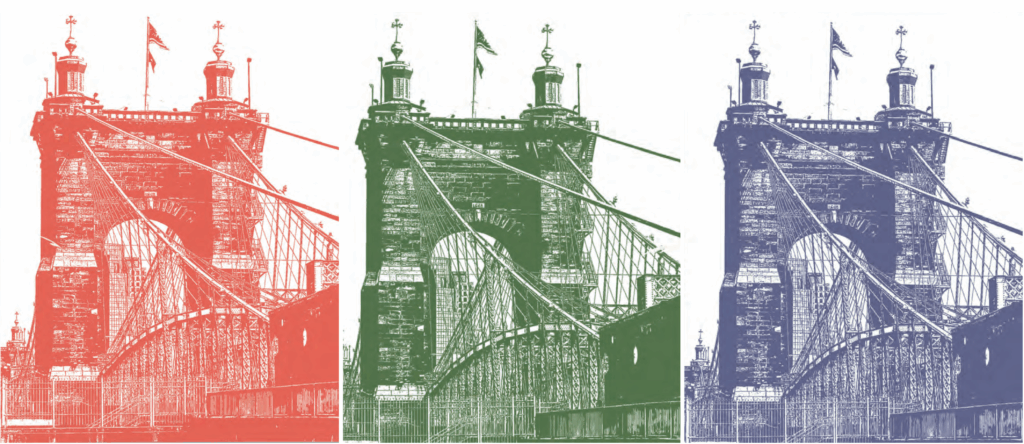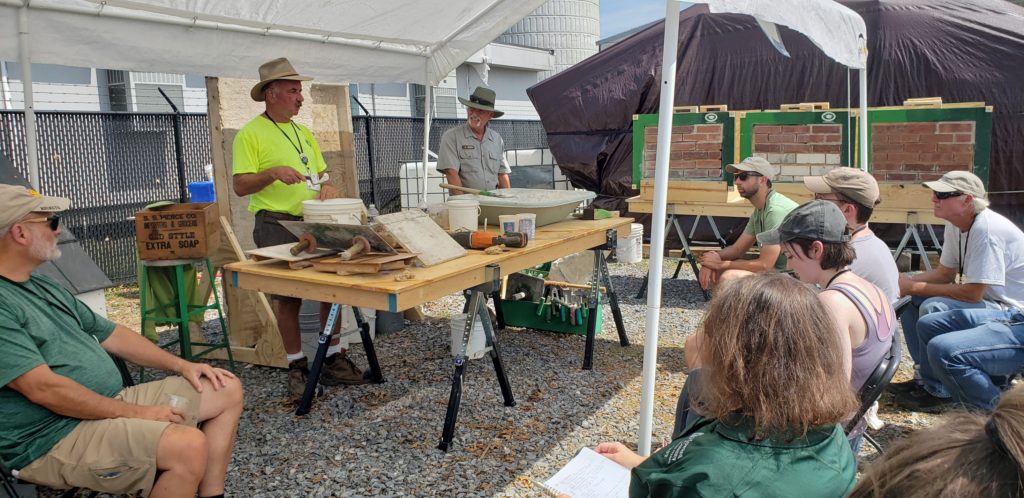Preservation Organizations
There are many organizations at the local, state and national level that play a part in the preservation field. Below is a list of the organizations that are the primary organizations that are leaders in the field at both the national and state level.
A State Historic Preservation Office (SHPO) is responsible for “surveying, evaluating and nominating significant historic buildings, sites, structures, districts and objects to the National Register” (National Park Service). Each SHPO was designated as part of the National Historic Preservation Act of 1966, whose officers help to preserve historic places by coordinating and promoting preservation efforts throughout their service area.
They are funded annually through the Historic Preservation Fund grants program, which itself was signed into law in 1976 to appropriate a portion of royalties that energy companies pay for the right to drill for natural resources.
Each SHPO is also the organization where Federal and State Historic Tax Credits applications are reviewed and processed. Ohio and Kentucky both have state Historic Tax Credit programs.
To learn more about each SHPO that serves communities in the Cincinnati Preservation service region, visit:
The National Park Service (NPS) is a bureau under the U.S. Department of the Interior, charged with the preservation and management of the cultural and natural resources throughout the 85-million-acre national park system. The NPS has authority over the National Register of Historic Places, National Historic Landmarks program, and properties that are eligible for listing on the National Register.
“The NPS partners with State, Territorial, Tribal, and Federal Historic Preservation Officers to identify, nominate, and list properties in the National Register of Historic Places, the list of places of local, state, Tribal, and national significance that Americans believe are worthy of preservation. More than 95,000 entries encompassing over 1.8 million sites, buildings, structures, and objects are listed in the National Register” (NPS). Indigenous culture and stories, Civil War battlefield sites, and sites of civil rights milestones alike are maintained and disseminated by the NPS.
The bureau also manages grant programs that support the work of historic preservation offices, nomination processes in communities, and rehabilitation of historic properties damaged by natural disasters.

William Howard Taft National Historical Site in Cincinnati, Ohio was included on the National Register of Historic Places in 1976 and is managed by the National Park Service. Photo by Cincinnati Preservation.
The National Trust for Historic Preservation (NTHP) is a privately funded 501c3 organization, created by an act of Congress in 1949, that promotes public policy discussions, works with state and local preservation organizations, and focuses on historic areas (NEA). Today, its focus centers upon educational initiatives, highlighting endangered historic places through its annual Most Endangered List, and providing on-the-ground support for threatened buildings and sites. NTHP advocates with governments to preserve their heritage.
Among its most celebrated educational campaigns are This Place Matters and Preservation Month. Annually in May, Preservation Month is driven by the National Trust and celebrated by local preservation groups to promote the social, cultural, and economic benefits of preserving historic structures and sites. The National Trust started This Place Matters in 2008 as a marketing campaign to promote public awareness of, as is stated by the National Trust, “the importance of maintaining, preserving, and recognizing the historic and cultural significance of locations and properties across the country.”
A National Endowment for the Humanities Challenge Grant facilitates an endowment that helps the National Trust to support local and state preservation organizations through grants and technical assistance.
![]()
The National Trust for Historic Preservation partnered with the local Save Our Icons group by listing Union Terminal and Cincinnati Music Hall on the 2014-11 Most Endangered List. Photo courtesy of Save Our Icons.
The Advisory Council on Historic Preservation (ACHP) is an independent federal agency comprised of 24 statutorily designated members from federal agencies, preservation organizations, Indian tribes, and expert private citizens. Based in Washington, D.C., the ACHP has a modest staff who carry out historic preservation case reviews, provide training in historic preservation law and policy, conduct outreach to the American public on the importance of historic sites and community preservation, and much more.
The ACHP activities include:
- Administers the Requirements of the National Historic Preservation Act: Section 106 Office of Federal Agency Programs Fact Sheet
- Advises Congress and the White House on Preservation Policy: Office of Policy and Legislative Affairs Overview
- Addresses Critical Issues Raised by Indian Tribes and Native Hawaiian Organizations: Office of Tribal and Indigenous Peoples Fact Sheet
- Presents Awards to Honor Excellence in Historic Preservation: Awards Overview
Preservation Action serves “as the national grassroots lobby for historic preservation. [It] seeks to make historic preservation a national priority by advocating to all branches of the federal government for sound preservation policy and programs through a grassroots constituency empowered with information and training and through direct contact with elected representatives.”
The National Alliance of Preservation Commissions (NAPC) was mobilized by amendments to the National Historic Preservation Act of 1966, which “provided financial assistance to local governments that met requirements of the Certified Local Government program, including the establishment of a local preservation ordinance and commission.”
NAPC is a consortium of member commissions that helps its network accomplish preservation objectives through training programs. It also lobbies at all levels of government for programs and policies that help to sustain preservation commissions. It also provides resources around design guidelines, preservation planning, an extensive technical assistance library, and its quarterly member publication.

NAPC had their 2022 biannual FORUM in Cincinnati, Ohio bringing over 500 preservationist from 46 states to Cincinnati for a week.
Ohio, Indiana and Kentucky each have education and advocacy nonprofits that represent their respective statewide interests. They lobby for preservation legislation, strengthen connections between the public and cultural heritage sites, and to promote preservation as an economic catalyst. These organizations provide important partnerships with local preservation organizations, such as Cincinnati Preservation, to keep us informed of statewide legislation and policies that will effect our local work and historic resources.
Among those represented in our region are:
The Association for Preservation Technology (APT) is “a multi-disciplinary, membership organization dedicated to promoting the best technology for protecting historic structures and their settings.” Its membership consists of preservation professionals in over 30 countries, fostering an interdisciplinary network of collaboration, trainings, publications, and more. APT aims to advance technologies that support the protection and promote longevity of the built environment, while cultivating knowledge sharing.

An excerpt from #20 Introduction to Mid-Range Terrestrial Laser Scanning, an edition of Practice Points in the APT Bulletin.
The Preservation Trades Network (PTN) is “a 501(c)3 non-profit dedicated to empowering the traditional building trades through network, good works, community, fellowship and education.” It was founded on the premise that the conservation of structures relies upon skilled workers in building trades “who preserve, maintain, and restore historic buildings, and build architectural heritage for the future.” Membership is open to skilled laborers as well as preservationists, homeowners, and interest members of the public.
In addition to providing a network for skilled tradespeople, PTN hosts events and workshops, prepares educational materials, and fosters collaboration and skill-sharing.

A session hosted at the International Preservation Trades Workshop in 2023. Photo courtesy of PTN.
The National Preservation Institute (NPI) is a nonprofit, 501(c)3 organization, founded in 1980, dedicated to the education of “those involved in the management, preservation, and stewardship of cultural heritage.” It was created to provide course instruction on historic preservation across various locations.
Today, it offers continuing education and professional training for those involved professionally in historic preservation, while providing customized training for specific organizational needs. NPI also provides training in cultural resource management, in conjunction with cooperating organizations, taught by preservation professionals.
NPI hosts the Preservation Profiles podcast, “touching on advocacy, laws, and regulations, preservation planning, intangible aspects of historic preservation stewardship, and more.” Guests discuss how preservation can make an impact on the quality of life for communities and nationally.

Among the many trainings led by National Preservation Institute is Section 106: Resource Identification, designed to “look beyond current standards for identification of cultural resources for the purposes of compliances of Section 106 […] and determination of historic properties.” Photo courtesy of NPI.
